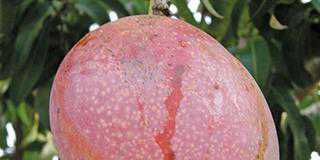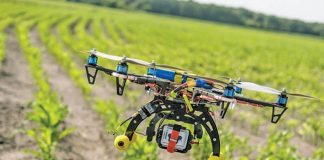
Landowners who have palmiet (Prionium serratum) on their properties may not be fully aware of the value of this specialised semi-aquatic plant. Palmiet grows along river margins and in wetlands and performs several essential ecosystem services. Some palmiet wetlands have built up layers of peat – organic material with a high carbon content – due to the accumulation of sediments and organic matter over thousands of years.
Palmiet wetlands occur mostly in the fynbos biome but are found as far north as southern KwaZulu-Natal, says Alanna Rebelo, a PhD student who works with wetland hydrologists at Stellenbosch University. “Although some palmiet wetlands have been destroyed or damaged, there’s scope for restoring and conserving them,” says Alanna. “Unfortunately peatbed recovery is a far more complex process.”
Certain farming practices, many of them illegal, destroy palmiet. “These include ploughing the wetland for cropping on the fertile peat, changing the course of a river, or building canals in the wetland. Damage to wetlands and river channels is also caused by inappropriate road construction and dam building.” According to Alanna, the absence of palmiet results in greater flood damage, more severe erosion and silting up of dams. She says it is a myth that palmiet clogs rivers and impedes water flow.
“Palmiet does slow the flow of water, but in doing so plants perform a valuable service, such as filtration that provides us with clean water.“ South African rivers that were once covered by palmiet should not be maintained as open water bodies because of our high evaporation and water loss. The water used by the palmiet for maintenance and growth is less than the amount lost to evaporation were the water body to be exposed. The last thing farmers should do is bulldoze palmiet from their rivers.” Palmiet also saves water by enabling infiltration and the replenishing of groundwater supplies.
Restoration experiments
The study is based on sound hydrological models but restoration work is still at the experimental stage. Alanna suggests that where palmiet occurs naturally, farmers could plant it to restore dongas, eroded areas and even the river itself. “Given the chance, palmiet will grow quickly over bare soil and help protect the riverbed during floods,” she says.
‘Passive’ restoration of palmiet can be achieved by removing livestock from rivers and putting up fences (a legal requirement), allowing it to grow back. It can also be done by growing palmiet seedlings – they are easy to propagate – and planting them in the riverbed. Alanna says that palmiet can be encouraged by clearing alien vegetation. Aliens compete with the palmiet for sunlight. Palmiet is shade-intolerant and quickly dies out under trees such as black wattle (Acacia mearnsii) and gum trees (eucalypts).
How palmiet works
Palmiet is unique in being the only species in its genus. Palmiet wetlands, especially those with layers of peat below them, provide five essential ecosystem services.
Water supply
Palmiet wetlands and their peat beds act as giant sponges, absorbing water during the rainy season and releasing it in the dry season. The wetland slows down the surface flow, allowing for the recharging of groundwater aquifers. The water level in the peatlands can fluctuate by several metres from season to season. Alanna explains that restoring damaged wetlands by clearing alien vegetation could increase river flow dramatically, even in the dry season.
A study of the Kromme River, which supplies Port Elizabeth with water via the Churchill Dam, is a case in point. This river once had a 15,18km2 stand of palmiet; today all that remains of this is 2,28km2. A hydrological model of the river suggests that if 1 250ha (30,2%) of black wattle was cleared, and 116ha (10,5%) of palmiet wetlands restored (a process that would require substantial financial investment), the long-term pay-off would be 27,5mm more river flow per unit area cleared each year.
This equates to 340 000m3 of water per annum, 20,3 mm more baseflow available each year (250 000m3) and improved water quality. Clearing 2 690ha (65,1%) of black wattle and restoring 520ha (34,2%) of palmiet wetlands would yield a gain in riverflow of 42mm per unit area cleared (1,13 million m3 in total).
“This is a lot of water,” says Alanna. “To put it into perspective, the Churchill Dam has a maximum capacity of 33,28 million cubic metres and supplies 18,19 million cubic metres per annum, so the increase is 6% of the supply. There would also be a gain in baseflow of 34,15mm each year (920 000m3) and the benefit of improved water quality. “In addition, investing in the restoration of the Kromme would provide greater flood protection, roughly in proportion to the extent of the wetlands restored.”
Water quality
Wetlands are the ‘kidneys’ of the earth because of their remarkable filtering ability. Besides slowing down river flow, palmiet wetlands on peatbeds improve water quality in two ways. Firstly, the thick layers of peat beneath the palmiet act as a pure carbon filter for the water. Secondly, the leaves of the palmiet act like a sieve, retaining chemicals and bacteria in the wetland. They continue to perform this function after they have died off.
Flood protection
Palmiet has strong roots, which prevent the plant from being ripped out during heavy floods. Following the path of least resistance it lies down flat, allowing the water to flow over it. The water slows down, decreasing the force of the flood. There is less debris in the floodwaters, which translates into less damage to infrastructure, farms and dams downstream. On the other hand, alien trees such as black wattle are easily ripped out during floods and their heavy branches cause damage downstream. They form blockages in the river, which cause further damage to farms and infrastructure when they break.
Capturing carbon
The Kromme wetlands in the Langkloof have peat beds more than 3m deep. Peat has been built up through carbon sequestration (capturing carbon from the atmosphere), which improves air quality. Due to this, peatlands have been earmarked as a potential area of investment for carbon credits. When wetlands are destroyed and the peatlands exposed, they dry out, releasing the large amount of carbon captured over millennia and polluting the atmosphere. Alanna warns that once this process has started, it is difficult to reverse.
Biodiversity
Palmiet wetlands are areas of rich biodiversity, providing habitat for many species, including endangered and endemic species of fish, invertebrates, mammals, reptiles, amphibians and birds. Biodiversity has great value for agriculture (cultivars, pollination, protection from disease), human health (dietary health, nutritional security, drug discovery, and psychological and social values), business and industry. Farmers can also exploit the tourist value of these unspoilt natural areas.
Contact Alanna Rebelo on 079 499 7235 or email [email protected].













